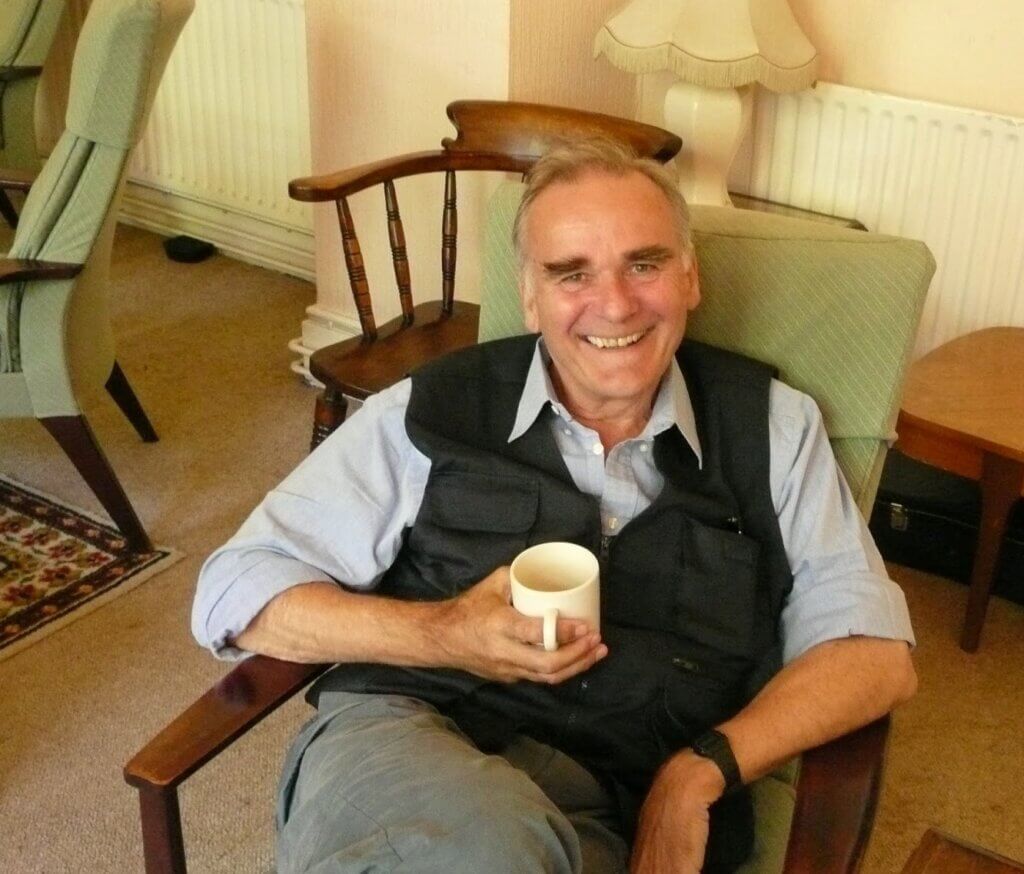Part Two: The John Brierley Story
By Johnniewalker Santiago, shared with permission
I couldn’t resist asking, “When you set out from St Jean that first time, did you have a guidebook?” “I did” he said, “but it was full of inaccuracies, particularly wrong distances and at the end of the day an unexpected extra two or three kilometres is a nightmare when you are exhausted.” That’s why in John’s guides the distances are deadly accurate. “I measure them on maps and wear a GPS device on each wrist,” he said proudly.
As we talked, I could see in John’s eyes that he was taken right back to that first pilgrimage. “I got a sense that I was searching for something. I spent a week in silence, avoiding contact with others. Lost in thought as I walked the route. There was a lot of rain, and I was soaked through most days. I climbed the mountain to O’Cebreiro and I went into the little chapel. I was cold, confused. I was aware something big was happening to me, but I didn’t know what it was. I knew that the parish priest of this church, Don Elías Valiña Sampedro, had been responsible for much of the modern revival of the Camino, and as I knelt beside his memorial, I got a huge sense that I was being called to write guidebooks to the Camino routes for future pilgrims. In that moment, a rare ray of sunshine shone through the little window in the wall high above me and bathed me in sunlight. In floods of tears, I committed myself there and then to write the guides.”
“I spent more days in silence, but when I stopped in the rain at an ancient cross outside of Portomarín I met two pilgrims I had encountered much earlier on the route. We embraced each other and there was a wonderful sense of joy. I had friends. I had a new sense of purpose. Above all I had a great sense of affirmation that everything was going to be ok.”
At this point in our conversation John enthused about this discovery then caught himself in midsentence and apologised for rambling. “I’m Irish” he explained with a smile. I was interested in everything he had to say but I wanted to know what he felt like entering Santiago for the very first time. John focused. “It was so disappointing,” he said. “I couldn’t cope with the crowd, it was so oppressive, I retreated from the cathedral in tears. In that moment I decided to keep walking and so I immediately set off for Finisterre.”
John said that although he had walked 33 days to Santiago, “one day for each year of the life of Christ”, it was on the three day journey to Finisterre that he said, “I got an overwhelming sense of death and resurrection.” He explained that on the way up the hill to the end of the world at Finisterre he realised with utter conviction that the spiritual journey he was on would not end but would continue for the rest of his life.
*British spellings used by the author have been left in for authenticity

